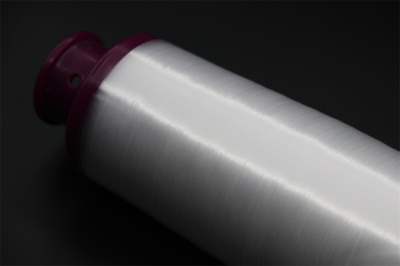
Advancing Aerospace Safety: Nickel Plated Carbon Fiber Veil's Role in Lightning Strike Mitigation
2024-03-25 11:23
In the realm of aerospace engineering, the quest for materials that offer superior performance without compromising on safety is relentless. Carbon fiber-reinforced polymer (CFRP) composites have emerged as a cornerstone in this quest, celebrated for their unparalleled strength-to-weight ratios. Yet, the Achilles' heel of CFRP has been its susceptibility to lightning strikes, a vulnerability that significantly impacts its utility in aviation. A groundbreaking study sheds light on nickel plated carbon fiber veil as a transformative intermediary in carbon fiber/epoxy composite laminates, marking a significant stride in enhancing both interlaminar fracture toughness and through-thickness electrical conductivity.

Electrical Conductivity Amplification: The integration of nickel plated carbon fiber veil into CFRP laminates isn't just a marginal improvement but a quantum leap in electrical conductivity, boasting an increase of 220.49%. This enhancement is crucial for dissipating the electrical energy of a lightning strike across the composite structure, reducing the risk of localized damage.
Toughness Enhancement Mechanisms: The veil's contribution to toughness is multifaceted, encompassing the pull-out, debonding, and fracture of nickel-plated fibers, alongside the nickel plating's own peeling and splitting. These mechanisms collectively uplift the laminate's interlaminar fracture toughness by 74.75% (GIC) and 36.22% (GIIC), fortifying the composite against delamination—a common failure mode under mechanical and thermal stress.
Implications for Lightning Strike Protection: By fortifying the laminate against both electrical and mechanical failures, the nickel plated carbon fiber veil represents a dual-threat to the limitations previously faced by CFRP in aerospace applications. This development is not just about mitigating the immediate effects of lightning strikes but also preserving the integrity of the aircraft's structure in the aftermath, ensuring functionality and safety remain uncompromised.
For aerospace engineers and material scientists, the implications of this advancement are profound. It signifies a leap towards materials that can withstand the rigors of nature and the demands of flight. Those interested in exploring the technical depth and application potential of this innovation are encouraged to access further resources [product link], where the intersection of research and real-world application paints a vivid picture of aerospace's future.
In summary, the nickel plated carbon fiber veil embodies the cutting-edge of composite material technology, offering a beacon of hope for overcoming longstanding challenges in aerospace design. Its dual capacity to enhance electrical conductivity and mechanical toughness simultaneously positions it as a pivotal development in the ongoing quest for safer, more resilient aircraft.
The journey of material innovation continues to push the boundaries of what's possible in aviation, with the nickel plated carbon fiber veil standing as a testament to the synergy between science and engineering in overcoming the challenges of the sky.








